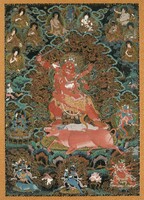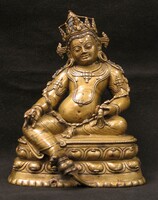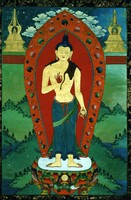Lamrim Painting Set - Images Added

Lamrim Lineage sets of paintings where each lineage figure is depicted in a single composition, surrounded by life story scenes, are quite rare. It is very common to find the Lamrim lineage all together in a single composition with Je Tsongkapa at the center. This set is by far one of the most beautiful known to exist. There are only twelve paintings known to exist that belong to this Lineage Set (Stages of the Path). The total number of paintings belonging to the original commission is currently unknown but would likely exceed more than fifty compositions in number. The majority of the paintings below belong to private collections with only two known to belong to a museum. (See the Lamrim Painting Set Outline Page).
Rubin Museum of Art:
Shantarakshita
Purbu Chog (student of Geleg Gyatso)
Dr. David Nalin Collection:
Namkha Gyalpo
Gendun Drub, 1st Dalai Lama
Yeshe Dorje
Unidentified
Private Collections:
Asanga (student of Maitreya)
Dromton (student of Atisha)
Unidentified (student of Acharya Vairochana)
Vidyakokila the Younger (student of Vidyakokila the Elder)
Chokyi Dorje, 15th century (student of Baso Chokyi Gyalstsen)
Geleg Gyatso, 16th/17th century (student of 1st Panchen)


















